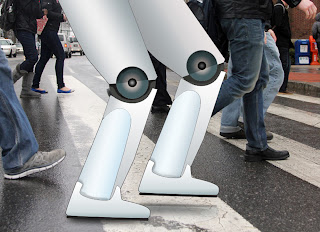When a robot is moving one of its
limbs through free space, its behavior is well-described by a few simple
equations. But as soon as it strikes something solid — when a walking robot’s
foot hits the ground, or a grasping robot’s hand touches an object — those
equations break down. Roboticists typically use ad hoc control strategies to
negotiate collisions and then revert to their rigorous mathematical models when
the robot begins to move again. Researchers at MIT’s Computer Science and
Artificial Intelligence Laboratory are hoping to change that, with a new
mathematical framework that unifies the analysis of both collisions and
movement through free space. The work could lead to more efficient controllers
for a wide range of robotic tasks, but it could also help guarantee the
stability of control algorithms developed through trial and error — or of
untried, but promising, new algorithms.
In a pair of recent papers, the
researchers demonstrate both applications. At last year’s International
Workshop on the Algorithmic Foundations of Robotics, they showed how their
technique can improve trajectory planning in complex robots like the experimental
Fast Runner, an ostrich-like bipedal robot being built at the Florida Institute
for Human and Machine Cognition. According to associate researchers, Fast
Runner offers a good illustration of the problems posed by collision.
Ordinarily, a roboticist trying to develop a controller for a bipedal robot
would assume that the robot’s foot makes contact with the ground in some
prescribed way: say, the heel strikes first; then the forefoot strikes; then
the heel lifts. To prove the stability of a control system for a robot that’s
colliding with the world, then, it’s necessary to evaluate every possible
solution of the resulting equations.
More information:
